I took awhile to getting around to drinking Bitterleaf Tea’s Ice Queen 2007 Spring Bing Dao Sheng puer. Every Bing Dao I’ve tried I greatly enjoyed – the sweet flavor tends to ring with my sweet tooth. Liking Bing Dao does not make me happy as it is expensive! Bitterleaf sent me Ice Queen awhile back and since the tea smelled so good, has a $0.83 per gram price tag, so I went into horde mode. Something sparked in me today urging me to drink Ice Queen. That something is dying for a sweet puer as I keep craving Korean honey rice snacks.
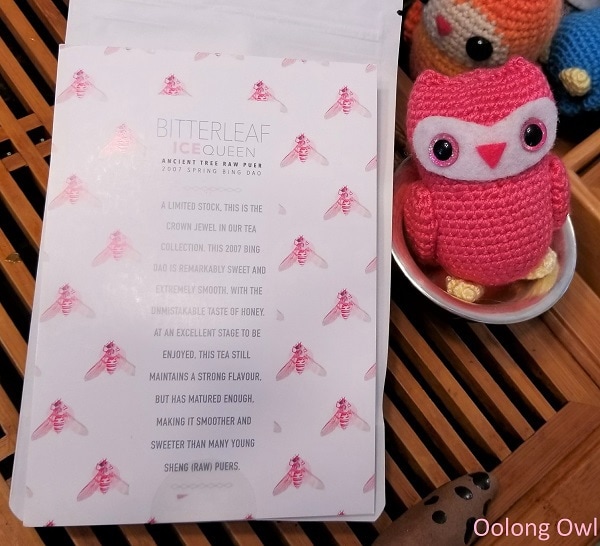
Dry Leaf and Steeping Instructions
Ice queen has an amazing syrupy honey scent.
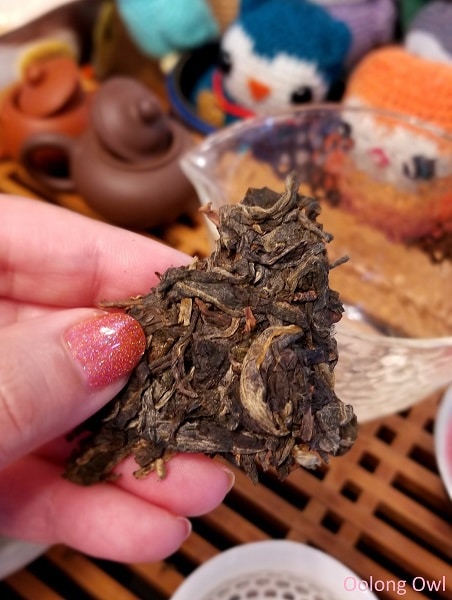
I went my typical gongfu cha style of 1 gram of tea per 15ml of vessel size. I used boiling water, and quick infusions of 5-10 seconds to start, adding time as I went.
Tasting of Bitterleaf’s Ice Queen 2007 Spring Bing Dao
First and Second Infusion: Ice Queen tastes like honey spun sugar – it is honey sweet and bright in flavor. The body coats the mouth well. The trip is like eating honey cotton candy and chasing it down with heavy cream. The aftertaste is light right now as I get a bit of sweetness that evaporates to a gentle incense flavor. Wait even longer and I get a bit of apricot aftertaste.
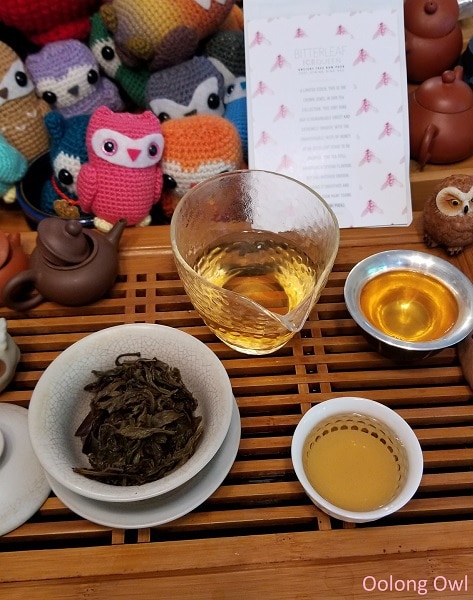
Third, Fourth, and Fifth Infusion: Ice Queen is starting to lose that honey sweetness, leaving other flavors to take over. What is going on is quite complex as I am getting a mix of amber incense, stone fruit, honey, brass, and slight astringency at the end that breaks the smoothness. The honey in this reminds me a bit of golden flower fu zhuan, but much more high class.
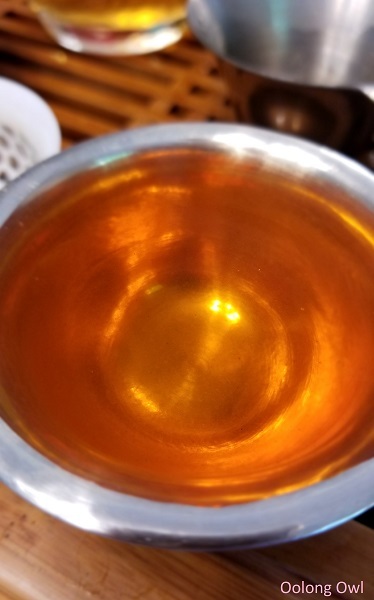
Sixth and Seventh Infusion: Ice Queen is so smooth and at max flavor. It is quite interesting as the flavor is dancing into too strong territory, yet so smooth it tastes pleasant. The amber flavor is overtaking the other notes, with honey in the background.
Lately, I’ve been quite susceptible to tea inflicted gut rot. I can physically feel this tea is very strong – my stomach is reacting as if I am drinking potent young tea, yet my taste tongue says otherwise. This tea is like reverse pepto-bismal – the heavy creamy body and smooth taste makes it go down well, but my guts know I am drinking aggressive puer.
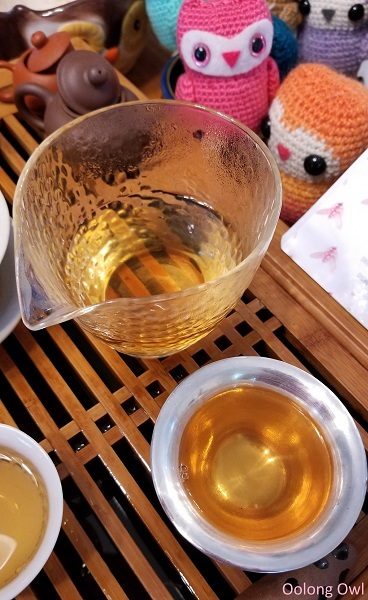
Eighth, Ninth, and Tenth Infusion: The tea drunk slipped in very gradually. I disappeared for a bit after someone telling me a matcha tasted like pond scum, in which I descended into googling “pond scum tea” which I learned pond scum is a food fad. I spent way too much time laughing and almost peeing my tail feathers. Ice Queen tea gives you a sensation of like being a kitten getting grabbed by the scruff of your neck and pulled into the air. Or if you prefer a horror film reference, Ice Queen’s physical feel is like flipping your hair over your face, hanging your head low, and floating around in your stained white gown.
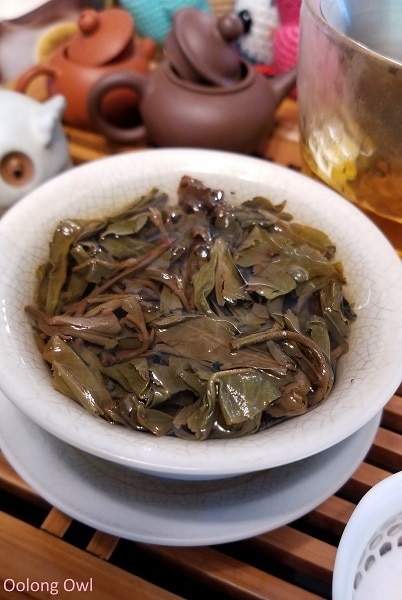
Flavor wise Ice Queen isn’t doing well, at least for my tastes. It has gotten quite bitter to drink, yet the aftertaste is honey and brassy. There is a build up of dryness causing me to puff my cheeks and scratch my tongue.
Eleventh and Twelfth Infusion: The eleventh infusion was quite weak, so I went in for the power infusion for the final infusion, so around 20 minutes. It was way too bitter to drink and the smoothness did not save it here.
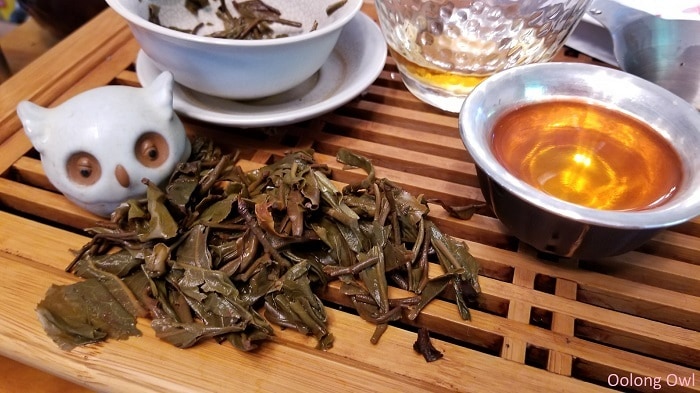
Comments
Bitterleaf’s Ice Queen 2007 Spring Bing Dao is true to their description of a smooth and honey tea. It has interesting young qualities of being perfectly honey and the heavy smooth body masking harsh notes. The honey notes are excellent, as well as the body, which is what I enjoyed the most from Ice Queen. The energy in this tea is fairly high too – you will have a sugary party time. I think Ice Queen 2007 Spring Bing Dao is a good tea to try if you prefer sweeter puer, or lots of body. It has excellent early infusions, though the late infusions can get a bit harsh. If you prefer younger sheng, Ice Queen would be a fun to try to explore middle aged teas in your tastes.
If you drink enough of a boutique’s tea, you certainly start to get their tastes. Bitterleaf seems to quite like that brassy and sweet creamy profiles. At least that is what I noticed so far, maybe my observations might change with more tea.
(tea provided for review)






